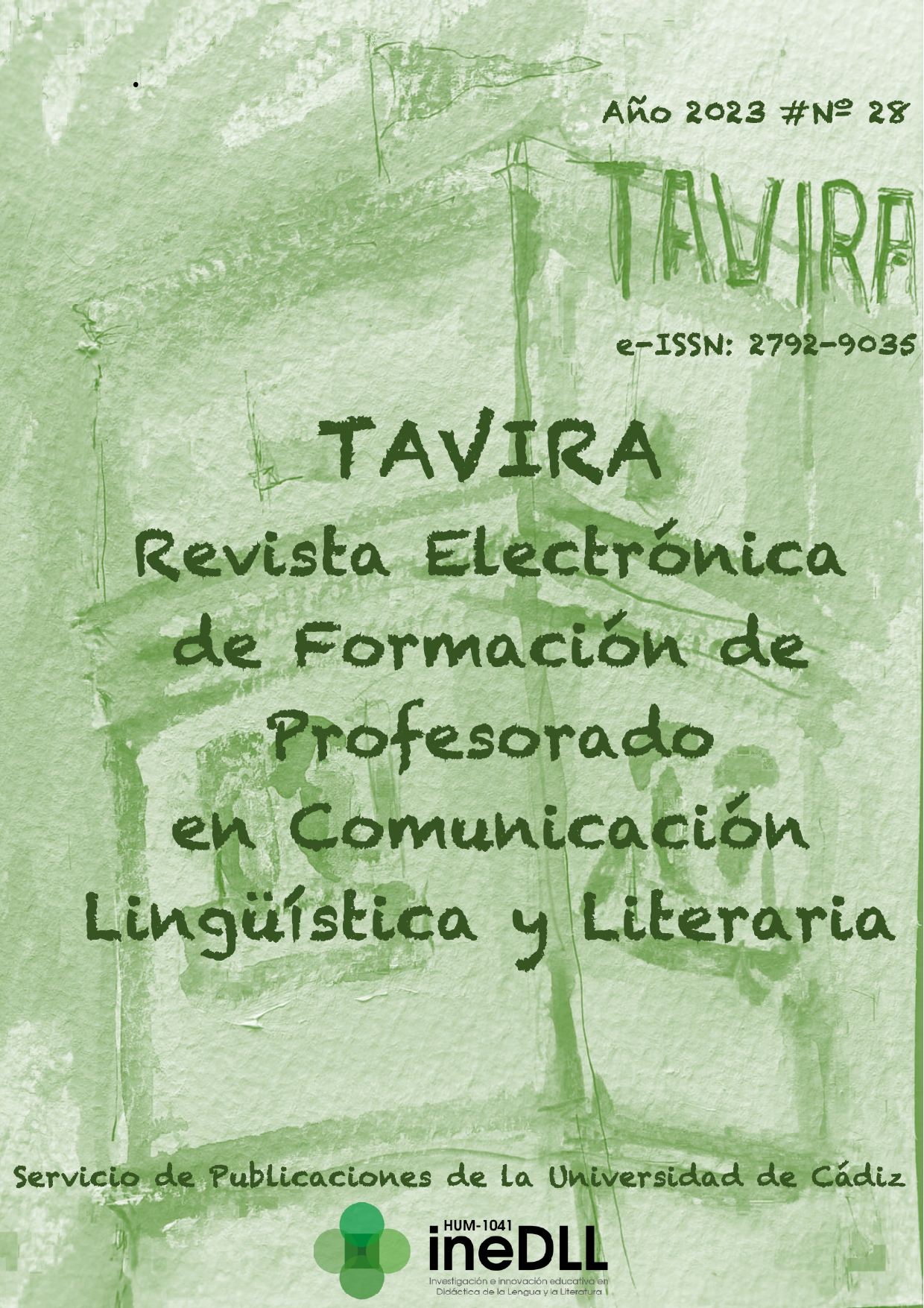The placement of clitic personal pronouns in PFL: analysis of written productions of Spanish-speaking learners.

Downloads
- PDF (Português (Brasil)) 165
- EPUB (Português (Brasil)) 49
- VISOR (Português (Brasil))
- MÓVIL (Português (Brasil))
- XML (Português (Brasil)) 9
DOI
https://doi.org/10.25267/Tavira.2023.i28.1102Info
Abstract
The purpose of this work is to describe the behaviour of Spanish-speaking learners of European Portuguese as a foreign language with regard to the placement of clitic personal pronouns in uninduced written productions. Using the descriptions of Duarte (2003) and Martins (2013) for contemporary European Portuguese (CEP) and Fernández Soriano (1999) for peninsular Spanish, which are present in reference grammars, the research used a quantitative and qualitative methodology that combines Contrastive Analysis (Lado, 1957), Error Analysis (Corder, 1971) and Interlanguage theory (Selinker, 1972) in order to obtain as complete a picture as possible of the choices made by these learners. The results indicate that, given the collocational patterns of CEP, these learners produce more convergent than divergent occurrences. There is no linear correlation between convergent occurrences and proficiency level in the corpus analysed. Convergence is more evident in contexts of enclisis and divergence occurs mainly because learners opt for enclisis in contexts where proclisis would be necessary, with the context of relative subordinate clauses in particular proving problematic. The causes of the deviations found are essentially due to the overgeneralisation of the basic CEP collocational pattern, enclisis, and the interference of the learners' mother tongue.
Downloads
How to Cite
License
Copyright (c) 2023 Telma Elisabete de Oliveira Duarte

This work is licensed under a Creative Commons Attribution-NonCommercial-NoDerivatives 4.0 International License.
Authors who have publications with this journal agree to the following terms:
- They will retain their copyright and grant the journal the right of first publication of their work, which will simultaneously be subject to the Creative Commons Attribution License. They may copy, use, disseminate, transmit, and publicly display, provided that authorship, url, and journal are cited, and they are not used for commercial purposes. Derivative works are not permitted.
You may adopt other non-exclusive licensing arrangements for distribution of the published version of the work (e.g. deposit it in an institutional telematic archive or publish it in a monographic volume) as long as the initial publication in this journal is indicated.
Disseminate your work on the Internet (e.g. in institutional telematic archives or on your website), which can lead to interesting exchanges and increase citations of the published work. (See The Open Access Effect)
References
Conselho da Europa (2001). Quadro Europeu Comum de Referência para as Línguas. Edições Asa. https://acortar.link/xRSCGu
Corder, S. P. (1971). Idiosyncratic dialects and error analysis. International Review of Applied Linguistics in Language Teaching, 9(2), 161-170.
Costa, J., e Lobo, M. (2013). Aquisição da posição dos clíticos em português europeu. Textos selecionados do XXVIII Encontro Nacional da Associação Portuguesa de Linguística, 271-288. https://acortar.link/TGrYee
Cristiano, J. M. (2010). Análise de erros em falantes nativos e não nativos. Lidel.
Duarte, I. (2003). Padrões de colocação dos pronomes clíticos. Em M. H. M. Mateus, A. M. Brito, I. Duarte e I. H. Faria, Gramática da Língua Portuguesa (5ª ed., pp. 847-867). Caminho.
Fernández Soriano, O. (1999). El pronombre personal. Formas y distribuciones. Em I. Bosque, e V. Demonte (Dir.), Gramática descriptiva de la lengua española volumen 1. (pp. 1209-1274). Espasa.
Fiéis, A., e Madeira, A. (2016). Clíticos e objetos nulos na aquisição de português L2. Revista da Associação Portuguesa de Linguística, 1, 359-380. https://acortar.link/NS6NG5
Gu, W. (2019). Pronomes clíticos na aprendizagem de PLE: um estudo empírico sobre a sua produção por falantes de chinês. Em A. M. Ferreira, C. Morais, M. F. Brasete e R. L.
Coimbra (Eds.), Pelos mares da língua portuguesa 4 (pp. 675-687). UA Editora. https://acortar.link/JFacSv
Kaiser, G. A. (1999). A evolução dos pronomes clíticos no português europeu em comparação com os pronomes clíticos em outras línguas românicas. Em J. A. Samper
Pasilla e M. Troya Déniz (Coords.), Actas del XI Congreso Internacional de la Asociación de lingüística y filología de la América Latina (tomo III, pp. 1933-1943). Librería Nogal.
Lado, R. (1957). Linguistics across cultures. The University of Michigan Press.
Madeira, A., Crispim, M. L., e Xavier, M. F. (2006). Clíticos pronominais em português L2. XXI Encontro Nacional da Associação Portuguesa de Linguística, 495-510. https://acortar.link/CruOfK
Magro, C. (2007). Clíticos: variações sobre o tema. [Tese de Doutoramento, Universidade de Lisboa]. https://acortar.link/k1j3lu
Martins, A. M. (2013). Posição dos pronomes pessoais clíticos. Em E. B. P. Raposo, M. F. B.
Nascimento, M. A. C. Mota, L. Segura e A. Mendes (Orgs.), Gramática do Português volume II (pp. 2231-2302). Fundação Calouste Gulbenkian.
Rodrigues, A. I. P. (2018). Colocação de Clíticos em Português como L2 por Aprendentes de LM Espanhola. [Dissertação de Mestrado, Universidade de Coimbra].
Rosário, M. J. P. (2005). Aquisição dos clíticos por falantes de português língua não
materna. Em D. Carvalho (Ed.), Des(a)fiando discursos: homenagem a Maria Emília
Ricardo Marques (pp. 553-562). https://acortar.link/pKfE5h
Selinker, L. (1972). Interlanguage. International Review of Applied Linguistics, 10, 209–231.
Stichini, C. (2014). Aquisição dos Clíticos no Ensino Simultâneo de PE e PB a Alunos Universitários na Suécia. [Dissertação de Mestrado, Universidade do Porto]. https://acortar.link/PkKLDF
Ułanowicz, E. U. (2020). Especificidades com o uso dos clíticos: estudo de caso no nível B de português língua estrangeira. [Dissertação de Mestrado, Universidade do Porto]. https://acortar.link/xyLKgw





